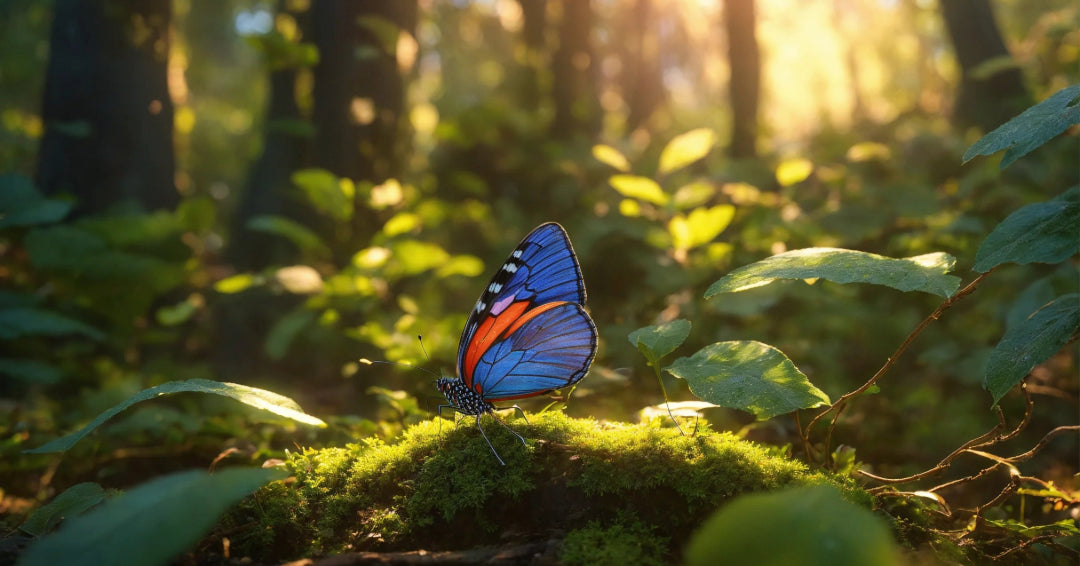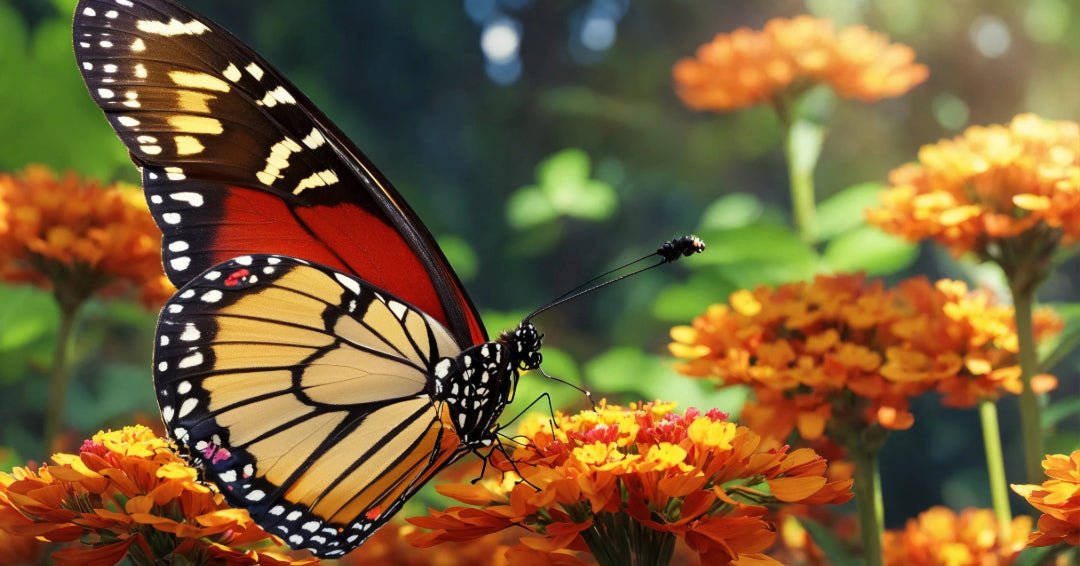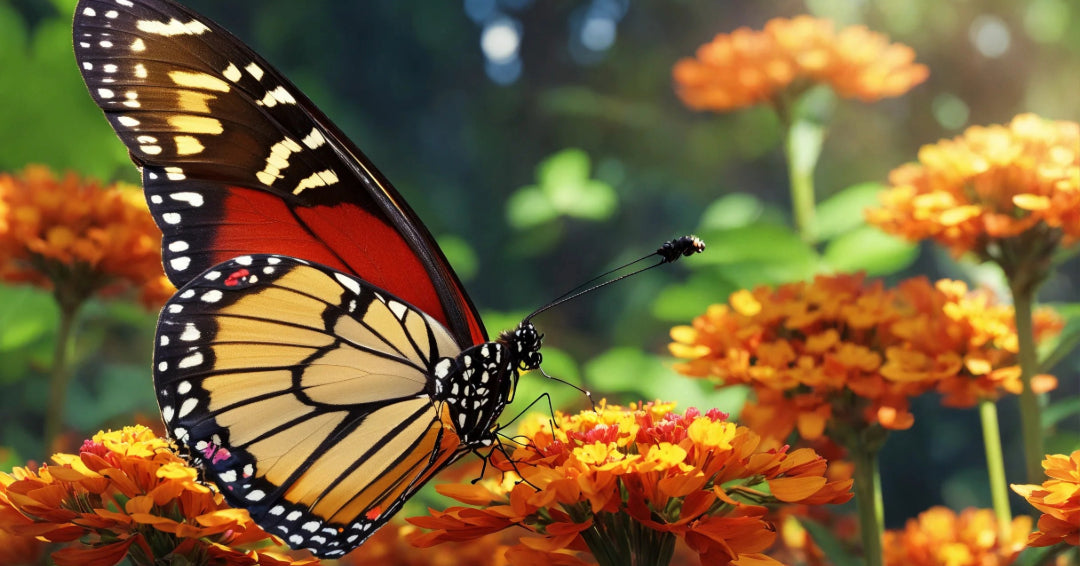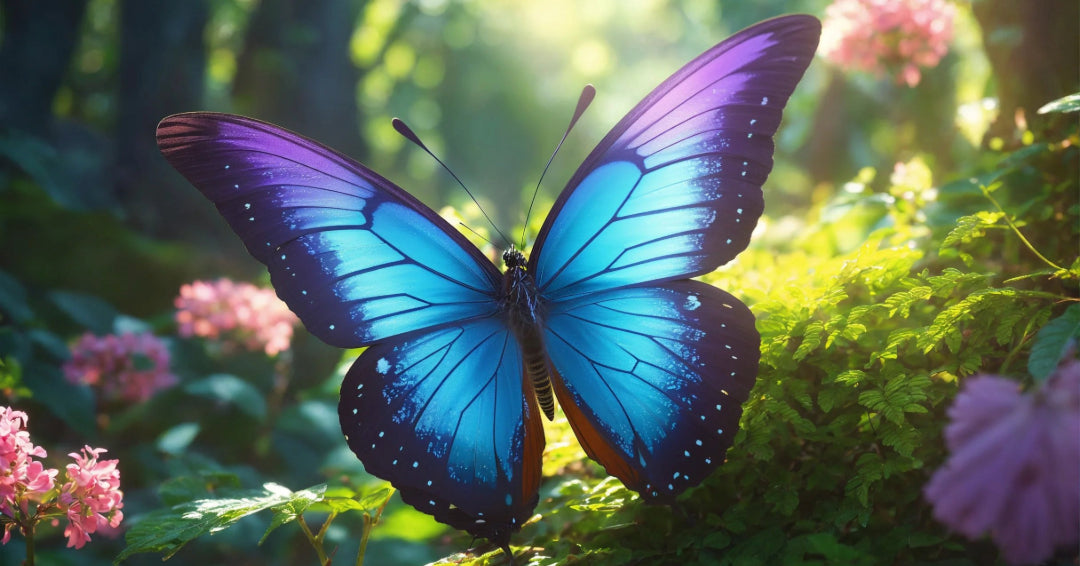
How do butterflies breathe?
Butterflies are biologically intriguing creatures. Their breathing process, which differs significantly from that of mammals, is one of the most intriguing elements of their biology. The question is: how do butterflies breathe? We'll look into butterfly respiration and the systems that allow them to survive and thrive.
1- Understanding how butterflies breathe through The Anatomical Structure
Before delving into the topic of butterfly respiration, it's critical to first grasp the anatomical anatomy of these insects. Butterflies are members of the order Lepidoptera, and their anatomy is tailored to their lifestyle. Here's a rundown of their anatomy in relation to respiration:
1-1 Exoskeleton (an essential component for optimal respiration)
Butterflies, like all insects, have a stiff exoskeleton that protects them and gives them their distinctive shape. This exoskeleton is comprised of chitin, a light and tough material.
1-2 Head (The vital organ for fluid breathing)
A butterfly's sensory organs are housed in its head, which includes antennae, compound eyes, and palpi.
1-3 Thorax (the important part for deep breathing)
Thorax: The thorax is the butterfly's primary body structure. It has six legs and four wings, which serve as the primary flight structures.
2- Butterflies breathe through tracheae
Butterflies breathe through a network of microscopic tubes known as tracheae. Tracheae are branching channels that extend from the butterfly's body surface to the inside of its tissues. The tracheae play the following roles in the butterfly breathing process:
2-1 Tracheal opening for optimal breathing
Butterfly tracheae open on the body's surface through minute orifices known as stigmata. These stigmata are spread throughout the butterfly's body, allowing gasses to enter and exit.
2-2 Gas exchange for fluid respiratory function
Oxygen is absorbed by the stigmas and disseminated to the body's cells via the tracheae. Simultaneously, carbon dioxide created during cellular metabolism is ejected by the tracheae.
2-3 Abdomen ( a vital respiratory support)
The abdomen houses the butterfly's internal organs, including the digestive, reproductive, and respiratory systems.

3- How do butterflies breathe throughout their life cycle?
The process of breathing in butterflies begins as early as the egg stage. Butterfly eggs have stigmas that allow the embryos to breathe the surrounding air. When the eggs hatch, the young caterpillars, or butterfly larvae, continue to use this respiratory system.
However, as caterpillars grow, they accumulate energy stores in preparation for transition into chrysalises. At this stage, the caterpillar wraps itself in a cocoon and goes dormant. The chrysalis does not need to feed during this stage and breathes primarily through its stigmas.


4- How do butterflies breathe while in flight ?
Because flight is an energy-intensive action, the need for oxygen in mature butterflies increases considerably when they take flight. Butterflies have evolved particular methods to keep themselves oxygenated while flying. They actively breathe by sucking air via their stigmas and forcing air into their tracheae with their abdominal movements.
This vigorous breathing is necessary for butterfly flight because it allows them to maintain their oxygen levels, generate the energy required for flight, and regulate their body temperature.

5- Environmental Influences on how butterflies breathe
Butterfly respiration is highly dependent on environmental factors. Several things can have an impact on their capacity to breathe properly, including:
5-1 How butterflies breathe depends on temperature
Butterflies are ectotherms, which means their metabolism is regulated by the outside temperature. Extreme cold or heat can impair their ability to breathe.
5-2 Humidity improves butterfly respiration
Butterfly stigmas must be kept moist in order to operate properly. Tracheal dehydration can occur when humidity levels are low.
5-3 Atmospheric pressure impacts butterfly respiratory capacity
Variations in atmospheric pressure can have an impact on a butterfly's capacity to suck air via its stigma.
5-4 Luminosity can also determine a butterfly's respiratory rate
Light can also affect butterfly respiration rate. To avoid the heat of the day, some butterflies may be more active at night.

6- Adaptations and Evolution of how butterflies breathe
Butterflies' respiratory systems are the consequence of adaptive evolution, which has allowed them to flourish in a variety of conditions. Tracheae and stigmata development has proved critical for butterflies to fly, feed, and survive.
Butterflies' respiratory systems are distinct from those of other insect groups, the result of millions of years of adaptation to their way of existence.
7- Conclusion on the butterfly respiratory process
Butterfly respiration is a fascinating mechanism that illustrates these organisms' amazing adaption to their surroundings. The tracheae and stigmata system allows butterflies to keep an appropriate supply of oxygen for their metabolism and activities, including flight.
Understanding butterfly respiration is critical for better understanding these insects and aiding in the conservation of their natural environments. We can ensure that butterflies will continue to delight our gardens and woodlands with their graceful beauty and colorful presence by maintaining these habitats.

